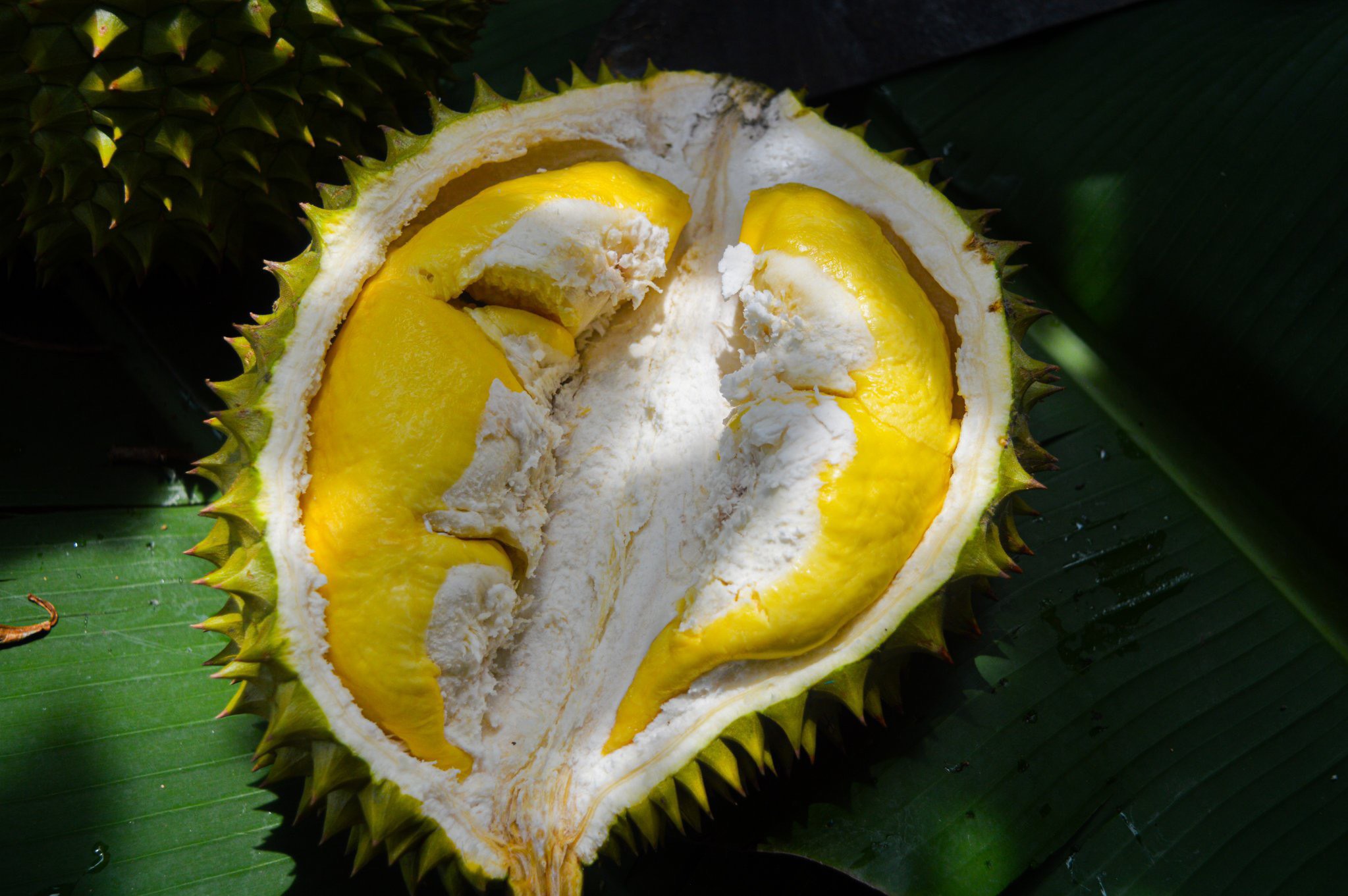Durian, nicknamed the “king of fruits”, is a large, spiky, greenish-brown fruit that is well-loved in its native Southeast Asia. The fruit is known for its strong odor, which can vary depending on the variety of durian. Many people find the odor off-putting, and the fresh fruit has even been banned from some public places and mass transit.
The fruit can be up to 30cm long and about 15cm wide, weighing 1-3kg (depending on the variety, there are mutant durians that can weigh up to 8kg). The yellow-green, light yellow or red flesh is beloved by many for its custardly texture and unique flavor. Durian’s short season and limited shelf-life, as well as rising demand, mean the fruit is relatively expensive, particularly when imported.
1. What does durian taste like?
Durian has been described by a number of journalists, travelers and writers using seemingly incongruous descriptions. The fruit is extremely popular and loved by many in Southeast Asia, but the smell has put off many newcomers. Durian’s odor has been described as resembling dirty gym socks, rotten eggs, cut onions, manure and roadkill. Some describe the flesh as tasting similar, but fans of the fruit describe it as having notes of almond and a custard-like texture. When ripe, the flesh is uniquely tender and creamy. It is not acidic, overly sweet or overly juicy. The odor, flavor and coloration can vary depending on the variety of durian.

Despite the strong odor, this fruit is considered a rich source of the vitamin B complex, vitamin C, dietary fiber, potassium and iron.
2. How is durian used?
Not only is it high in nutrients, but the flesh and seeds of durian can be used in a variety of ways. However, the seeds must be cooked before use. Fresh or frozen durian can be mashed or puréed and used in cakes, milkshakes, candies and even savory dishes. It’s most commonly used in sweet recipes.

Durian can be eaten directly or processed with some other ingredients such as sticky rice. In particular, the durian rind can be eaten just like the flesh and seeds if used properly. It can be stewed with some types of meat or fried with bread, which also has a very special and delicious taste.
3. Health benefits of durian
Studies have shown a number of health benefits of durian:
- Prevent heart disease
- Reduce the risk of cancer. Specifically, durian fruit extract can prevent breast cancer from spreading
- Control blood sugar
- Anti-infection
- Against aging
- AIDS digestion
However, eating durian can also cause harm. For example, if you eat durian in combination with alcohol, it will increase blood alcohol levels, causing conditions such as nausea, vomiting, or heart palpitations. Otherwise, eating durian can also cause allergic reactions, stomach problems, diarrhea or bloating. Durian seeds can cause breathing problems for some people.
If you are in the process of losing weight, you should limit your consumption of durian because it contains a high content of sugar and fat.
According to reports, the global durian fruit market was worth USD 17.6 billion in 2018. Rising awareness about the health benefits of durian has been fueling the demand for the product across the world. Over the past few years, durian has gained remarkable popularity as a filling and flavor in the food industry. Durians are sold in many markets, so you can easily find and buy them. Look for light-colored spikes without any dark brown patches or bits of white between the spikes, signs that the fruit is too ripe. Give the durian a shake – if it rattles, it has dried out and is no longer good to eat. Avoid fruit with dry, shriveled stems.
Due to its nutrition and many uses, durian is currently expected to bring economic benefits to the export industry in Vietnam as well as other countries.







